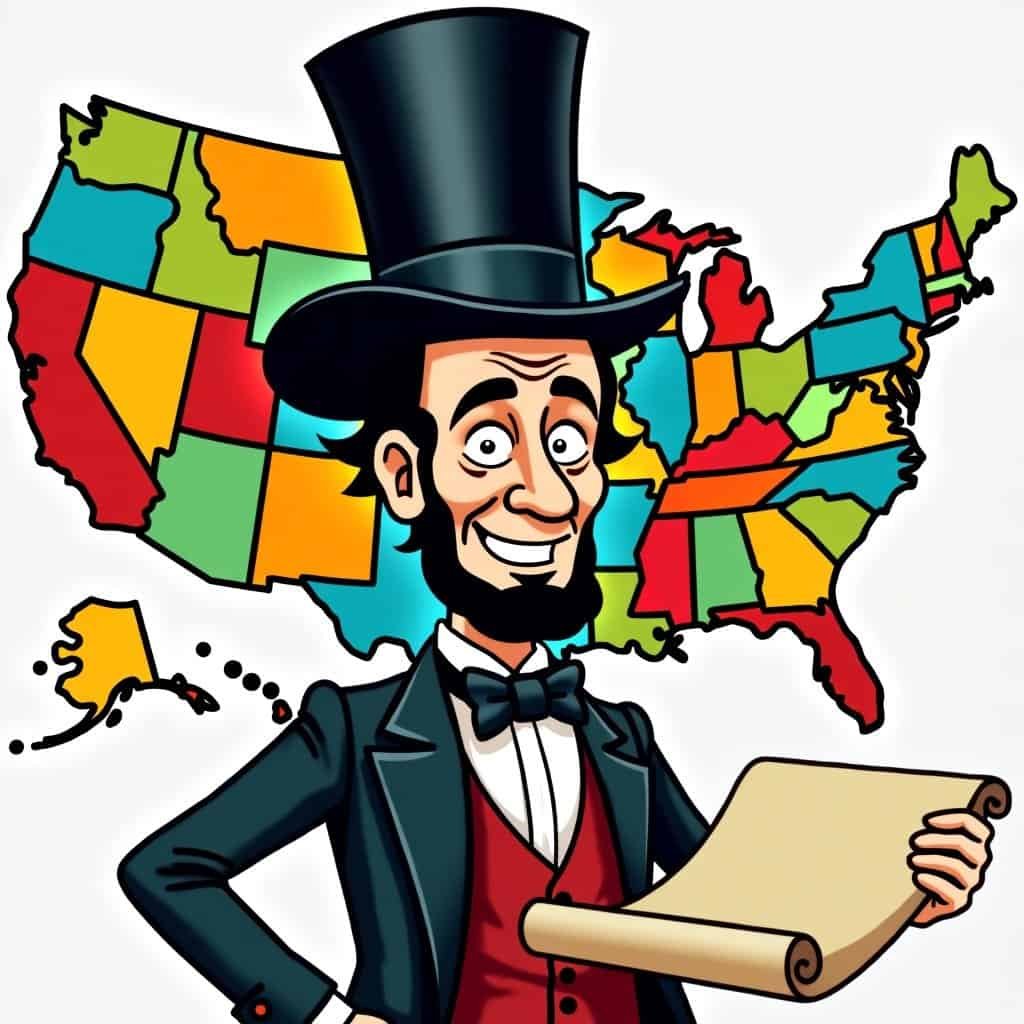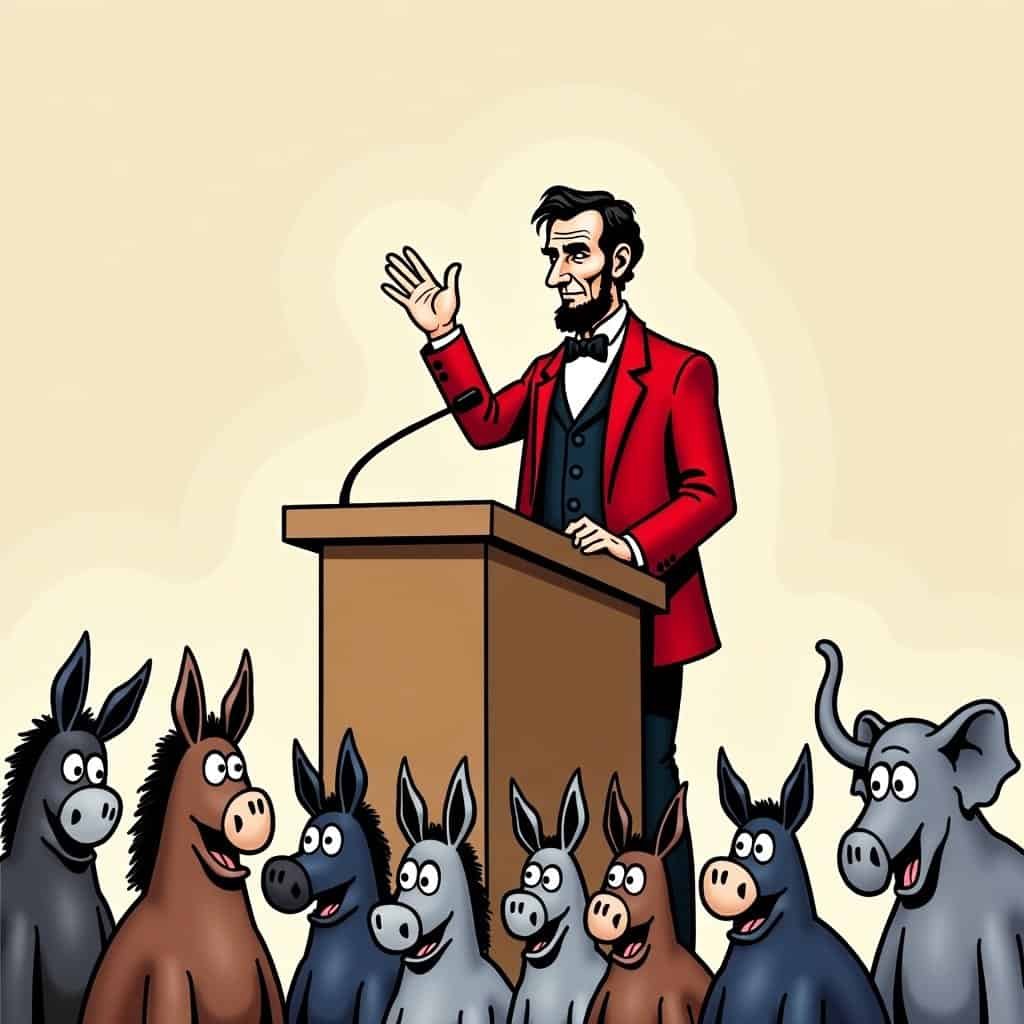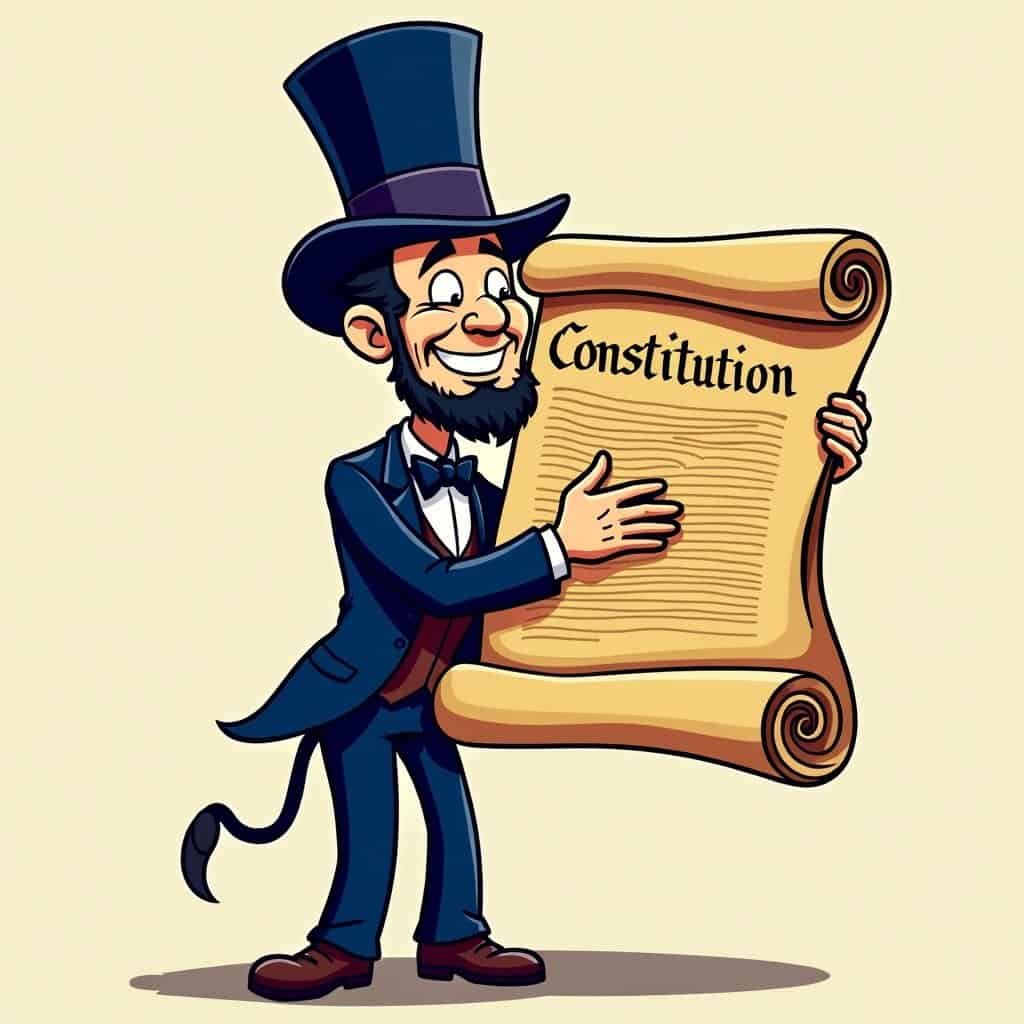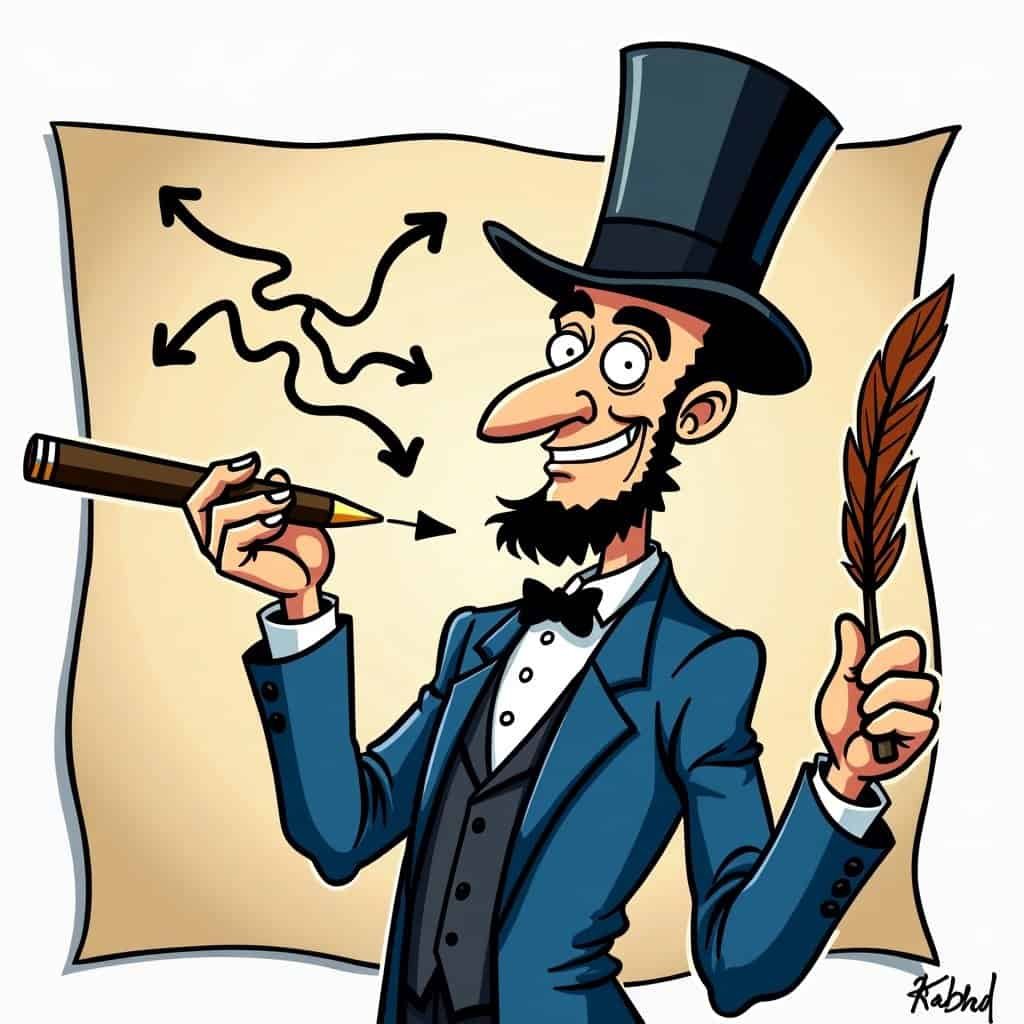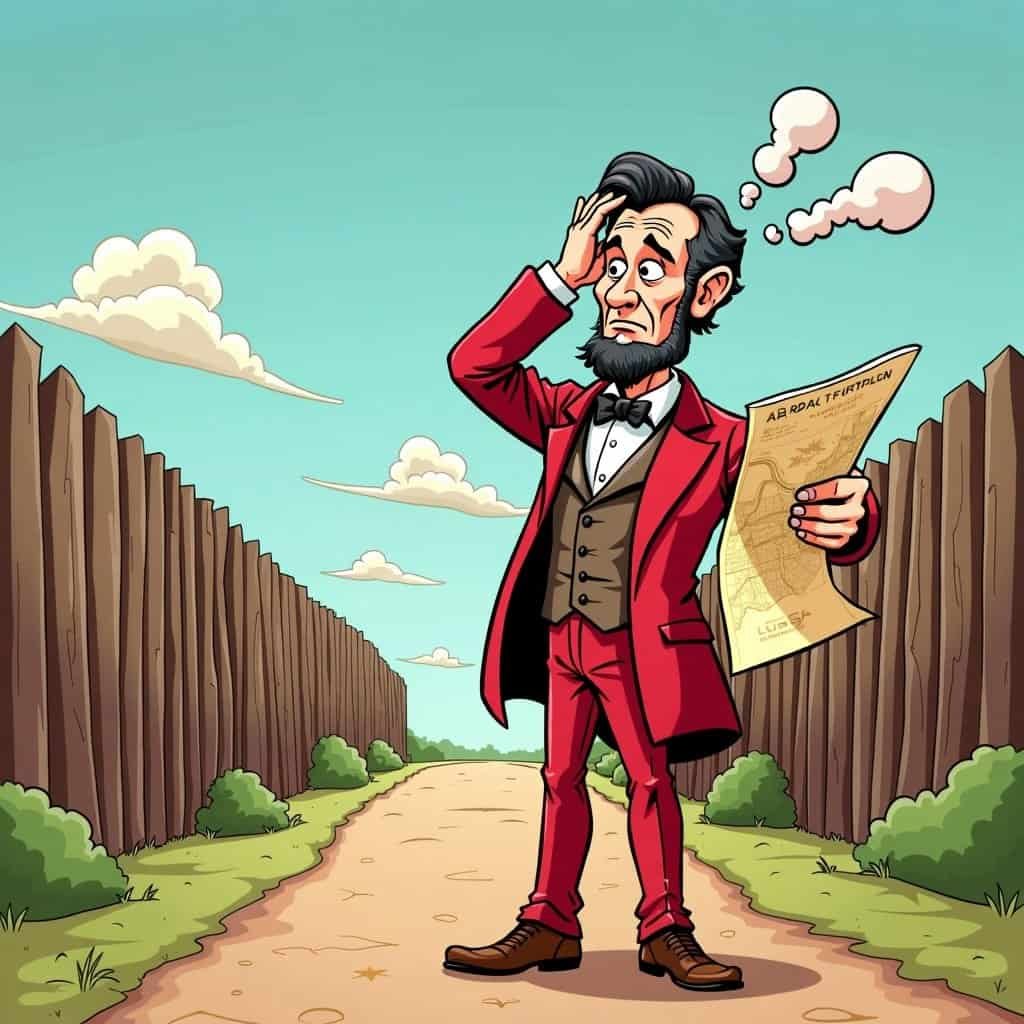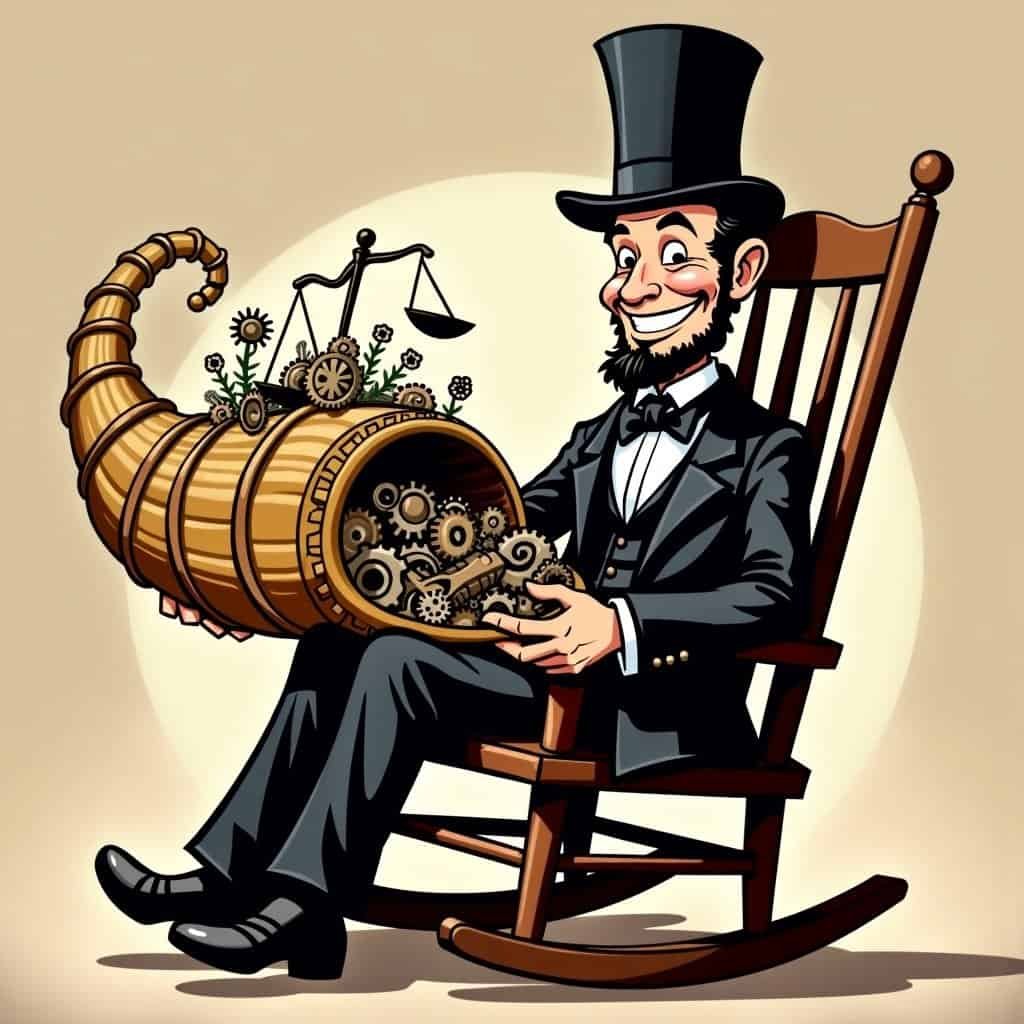When Abe Lincoln stepped onto the historical stage with nothing but a stovepipe hat and a desire for unity, the naysayers had no clue he’d soon turn the tables on those Confederate rebels. Yep, Honest Abe had a knack for blending statesmanship with a pinch of cleverness, like a political chef whipping up a recipe for freedom. In a nation at odds with itself, Abraham Lincoln took a stand for liberty, wielding his pen like an artist’s brush against the canvas of division.
Don’t go thinking he sat idle while the southern states threatened to break away like unruly cattle at a rodeo. He knew the country faced choices more serious than a prairie fire. Lincoln, the political virtuoso, played his tune amid the chaos, drafting the Emancipation Proclamation as if it were the ace up his sleeve in this high-stakes poker game.
That proclamation wasn’t just some memo you’d find tacked on a bulletin board in a dusty government office. It was a gutsy move to rally the troops and keep Old Glory flying high and free. Lincoln knew that freeing enslaved folks was about more than just equality – it was the linchpin for stopping the rebellion that threatened to rip the Union apart.
A Tasty Tidbit
Here’s a tidbit to chew on with your morning joe: Lincoln’s declaration didn’t magically sprinkle freedom like pixie dust on the enslaved. No sir! It took aim squarely at those saber-rattling Confederate states. Abe played the long game, betting that the stirring of nationalism and liberty in the North would boost the Union cause and drain support from the Confederates.
Lincoln’s Emancipation Proclamation: A Strategic Move
- ✦ Targeted Confederate states
- ✦ Rallied Northern support
- ✦ Weakened Confederate backing
- ✦ Emphasized individual freedom
- ✦ Laid groundwork for Union victory
Now, you might wonder, “What’s this got to do with conservative thinking?” Well, partner, it’s plain as day. Lincoln’s strategy didn’t just crack the rebellion like a walnut; it nurtured the enduring American value of self-reliance and liberty. In this balancing act of freedom and order, Lincoln’s approach echoes the conservative view that individual freedom trumps oppressive rebellion. Old Abe showed even then that the government’s job is to ensure freedom, not hold the reins too tight – a timeless bit of conservative wisdom that still rings true today.
In the end, while Lincoln’s Emancipation was as tricky as a fiddler on a tightrope, it was key in cementing the idea that liberty, that glorious liberty, was a fundamental right, not a privilege.
So next time you nod to Old Abe’s portrait, remember the emancipation wasn’t just a piece of paper. It was a strategic checkmate in the grand chess game of American unity, freedom, and conservative values. Ain’t it something how some things never change?

